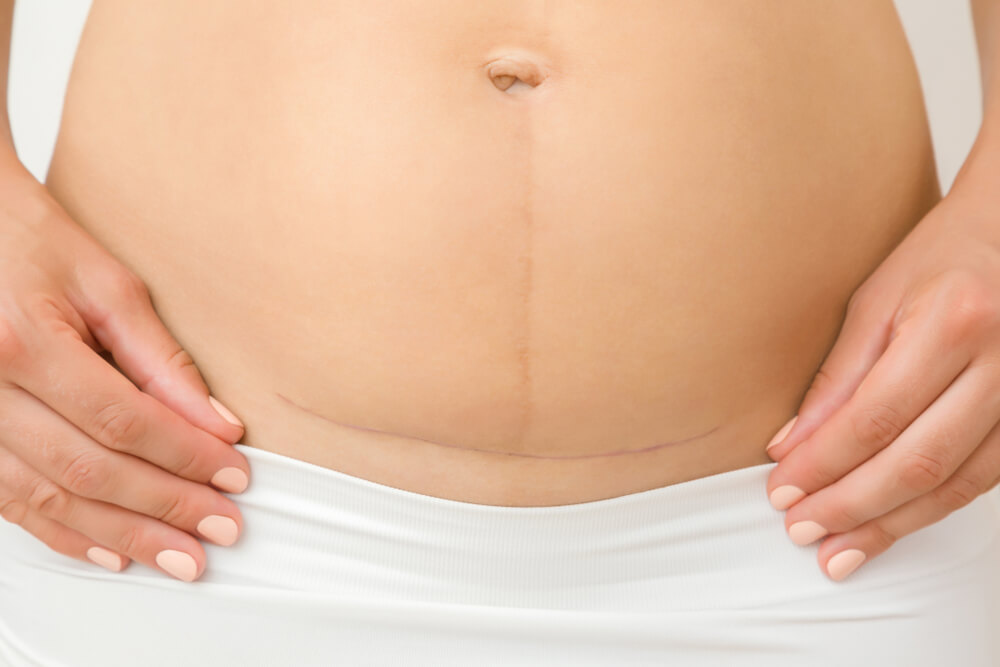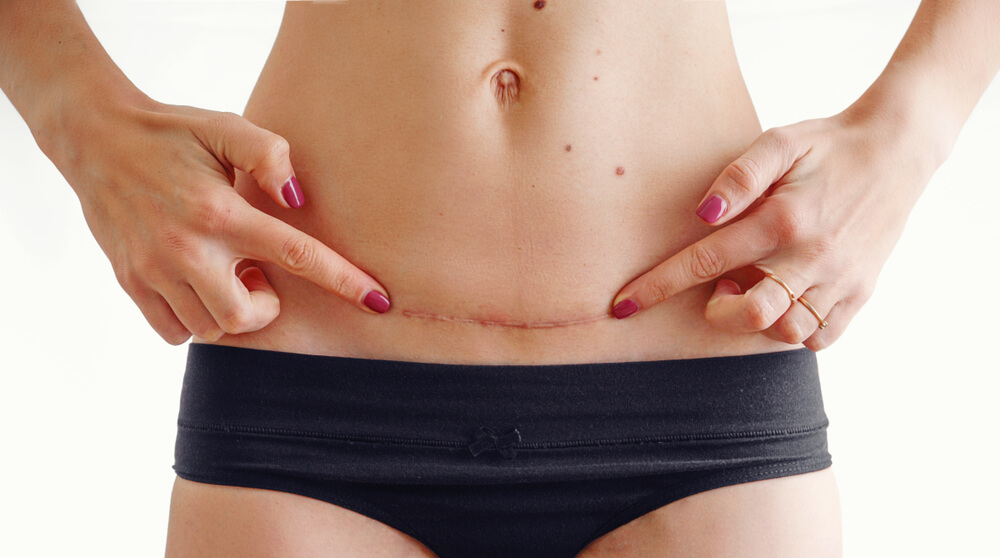A cesarean section, popularly known as a C-Section, is a common surgical procedure used to deliver a baby. It is often performed when a vaginal birth is not possible or safe, such as in cases of complicated or high-risk pregnancies. During this procedure, the baby is delivered through incisions made in both the mother’s abdomen and the uterus. It’s vital to understand that a C-Section is a major surgery. Therefore, like any surgery, it comes with a notable recovery period.
The recovery after a C-Section requires time, care, and patience. It is common to experience discomfort, pain, tiredness, and emotional changes during this period. The key role here is played by your chosen medical professional, so if you are looking for high-quality services of vaginal & cesarean deliveries in Coral Springs, FL you are at the right place.
Medical experts such as Dr. Jessica White are great options to consider, because of their medical expertise, patient care, communication skills, bedside manner, research contributions, and community involvement.
Immediately Post Surgery
Navigating through the C-Section recovery period can be a bit daunting, especially for first-time moms. To make the journey a bit easier, we have prepared a comprehensive guide that includes key points to consider during post cesarean recovery. We will discuss essential aspects like pain management, wound care, and the importance of rest during the recovery process. Additionally, tips for post C-Section care and recovery and what to expect during this period will be covered.
Physical symptoms and challenges faced immediately after a C-section
The immediate postpartum C-Section phase begins right after surgery when your body starts the healing process. During this time, physical discomfort is a common experience. Pain near the surgical area is typical, as your body starts to heal from the cesarean delivery. Most patients require pain medication to manage it initially.
C-Section scar healing is another crucial aspect of recovery after cesarean. Your nurse or doctor will provide guidelines on how to care for the wound to prevent infection and promote healing. This might involve cleaning techniques, special dressings, and occasional checks for warning signs like increased redness or drainage.
Along with wound care, women may experience other physical challenges in the early days post C-Section. These may include difficulty moving around, tummy discomfort from gas and bloating, discomfort during breastfeeding or holding the baby, and experience of hormonal fluctuations which may manifest as night sweats and chills.
Possible emotional reactions and hormonal changes faced by new mothers
Entering motherhood via a C-Section can be accompanied by a roller coaster of emotions. Hormonal changes after childbirth may lead to mood swings, coupled with the physical discomforts of cesarean section recovery, new mothers might feel overwhelmed. Some women also report feelings of disappointment or sadness if they had hoped for a vaginal delivery.
Postpartum depression is also a concern for all new mothers, not just those who have had a C-Section. However, the stress of healing from a major surgery can sometimes exacerbate these feelings. It’s important to articulate these feelings and seek help when necessary from family, friends, and healthcare professionals.
As new mothers navigate these emotional responses and the physical challenges post-cesarean, it becomes more evident that C-Section recovery is not just physical. Remember that taking care of your mental and emotional wellbeing too is an essential part of optimizing post-cesarean care.
How Long Does It Take to Heal From C-Section?
Process of Body Healing in the Weeks Following a C-Section
After the initial days post-surgery, the C-Section recovery delves into a long-term phase characterized by continued healing and adjustment. In response to the surgical trauma, the body initiates a complex array of physiological changes for recovery and healing after C-Section.
The first noticeable change is in the cesarean incision. It might appear red and sensitive in the initial weeks but it progressively starts to lighten in color as the C-section scar healing process continues. Often, women also experience numbness or itchiness around the surgery area – a clear indication the nerves are healing.
Post C-section pain will gradually decrease over two weeks, and will mostly subside by six weeks. You may feel more energetic, but fatigue due to the demands of caring for a new baby can persist. It’s critical during this period to listen to your body. Do not push your body too hard too soon, even if you start feeling better.
Many women also wonder how long do you stay in hospital after C-Section, and the answer is that it depends on numerous factors. Typically, mothers who have had a C-section stay in the hospital for about 2 to 4 days after the procedure. This duration allows healthcare providers to monitor the mother’s recovery, manage pain, ensure proper healing of the incision, and provide support with breastfeeding and newborn care.
Tips for Proper Care and Pain Management in the Long-Term Recovery Phase
Cesarean section recovery involves active participation from the patient herself. Here are a few post C-Section care tips to help alleviate discomfort and promote healing.
Firstly, managing post C-section pain is paramount. Your doctor will likely prescribe medications to manage pain. Always take medication as advised, and never hesitate to report to your healthcare provider if the pain becomes unbearable.
Wound care is another crucial aspect of post-operative care. Cleaning the wound with warm water and regularly changing wound dressings goes a long way in curbing infection. Also, watch for signs of infections like increased swelling or pus.
Lastly, beyond just cesarean section recovery, it’s important to maintain overall health. A balanced diet, plenty of fluids, and adequate rest support your body during this healing process. Light exercises, as recommended by your doctor, can also enhance postpartum cesarean management by boosting circulation and accelerating healing.

Impact on Future Pregnancies
Potential Risks or Complications in Subsequent Pregnancies After a C-section
Undergoing a C-Section can potentially impact future pregnancies. While many women go on to have healthy pregnancies and deliveries after a cesarean delivery, some may face an increased risk of certain complications.
One of the most publicized risks is that of a uterine rupture. While the risk is relatively low, it is a severe complication where the uterus tears along the scar line from a past C-section during a subsequent pregnancy or labor. This condition is a medical emergency and requires immediate care.
There’s also a slightly increased risk of placenta previa and placenta accreta in subsequent pregnancies. Placenta previa is where the placenta partially or fully covers the cervix, and placenta accreta is when the placenta attaches too deeply into the uterine wall. Both conditions may lead to heavy bleeding during delivery, thus requiring a C-section.
Due to these potential complications, pregnancies after a C-Section often require additional monitoring and care.
Possible Need for Additional Consultation or Care During Future Pregnancies
Additional consultation during future pregnancies post C-section tends to be a common occurrence. These consultations allow doctors to closely monitor both the mother and the baby’s health, keeping an eye for any possible complications related to the previous C-Section.
Regular ultrasound scans might be carried out to check the location of the placenta and its relationship with the previous C-section scar. The type of care you require and the frequency of these consultations may vary depending on your individual health, the number of previous C-sections, and the overall progress of the pregnancy.
Regardless of your cesarean section recovery, and in light of potential complications, a ‘VBAC’, or vaginal birth after cesarean may or may not be an option. Thus, it is prudent to discuss your birthing options and plans with your healthcare provider well ahead of your expected delivery date during future pregnancies.
Embracing C-Section Recovery
Cesarean sections are a common reality many women face during their childbirth journey. Whether out of necessity or safety, undergoing a C-Section should never be viewed with apprehension or a sense of inadequacy. It is just another way for a baby to come into this world and involves a recovery process that’s vastly closer to routine than to rarity. The journey from immediate post-surgery complications to long-term postpartum C-Section care is part of the process, and understanding these stages manifests itself as preparedness, not anxiety.
Sure, the path to cesarean section recovery might appear overwhelming, especially when juggling new motherhood duties. The plethora of physical symptoms including post C-Section pain, emotional roller coasters, and C-Section scar healing can make the process seem daunting. There is also the looming uncertainty about future pregnancies. However, remember that each of these challenges is surmountable, and you’re thoroughly equipped to manage them. You’re stronger than you think, and your body is designed to heal and recover in remarkable ways.
Take heart knowing ample support exists at each step of your journey. Science and medicine have made incredible strides ensuring your C-Section and subsequent recovery are as smooth as can possibly be. Never hesitate to ask for help or seek medical advice throughout your healing process – know that it is alright to do so. Call our medical center today and get the needed support and encouragement.


